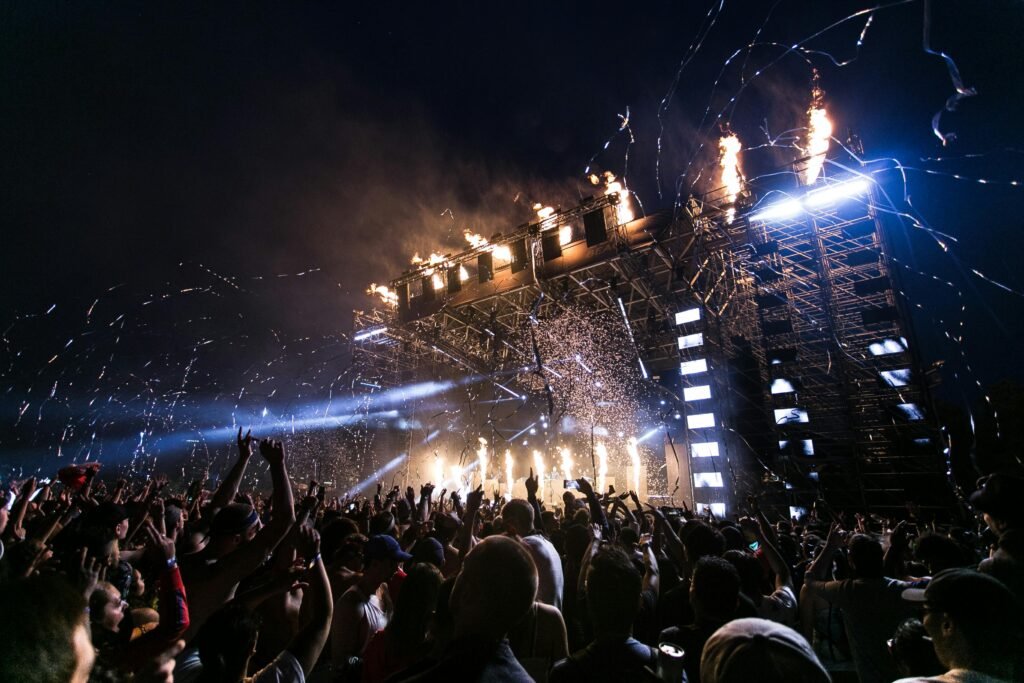Over the last two decades, Electronic Dance Music (EDM) has evolved from an underground movement to a global cultural phenomenon. EDM, once confined to underground clubs and niche music festivals, now dominates mainstream radio, arenas, and music festivals around the world. This explosive growth has been fueled by technological advancements, changing cultural trends, and a growing global community of fans. But how did EDM rise to become the genre it is today? Let’s take a closer look.
- 1. The Roots of EDM: Early Beginnings
- The origins of electronic dance music can be traced back to the early 1980s when pioneers like Kraftwerk, Giorgio Moroder, and Juan Atkins laid the foundation for electronic music. These artists experimented with synthesizers and drum machines, creating sounds that would later influence house, techno, and other forms of electronic music. By the late ’80s and early ’90s, genres like house, trance, and techno had emerged, taking root in cities like Chicago, Detroit, and Berlin.
- However, it wasn’t until the late ’90s and early 2000s that electronic dance music began to catch the public’s attention. The rise of raves and underground parties, often fueled by the rave culture and the rise of the internet, spread electronic music to a wider audience. The genre was still largely a subculture at this time, and EDM artists were seen as niche performers.
- 2. Technological Advancements: Making Music More Accessible
- The democratization of music production through technological advancements played a crucial role in the rise of EDM. In the early days, producing electronic music required expensive hardware and a specialized knowledge of sound engineering. But as digital audio workstations (DAWs) like Ableton Live, FL Studio, and Logic Pro became more accessible, aspiring producers could create professional-sounding tracks from the comfort of their homes.
- Additionally, the growth of social media and platforms like SoundCloud and YouTube gave emerging artists a global stage to showcase their talent. A new generation of producers, many of whom were teenagers or in their early twenties, could now reach millions of listeners worldwide with a single track or remix. This level of accessibility and exposure fueled a surge in creativity, pushing EDM to new heights.
- 3. The Festival Boom: Bringing EDM to the Masses
- As EDM grew in popularity, the rise of massive music festivals like Tomorrowland, Ultra Music Festival, and Electric Daisy Carnival (EDC) helped solidify the genre’s mainstream presence. These festivals, often drawing crowds of over 100,000 people, were not just about music—they became immersive experiences that combined incredible light shows, cutting-edge visuals, and a sense of community among fans. This festival culture became a key part of EDM’s rise, offering fans a chance to escape into a world of music, art, and freedom.
- The festival boom also attracted major brands and corporations, helping the genre break through into the mainstream. Corporate sponsorships and brand activations at festivals helped EDM reach an even wider audience. The visibility and global appeal of festivals led to collaborations between EDM artists and mainstream pop stars, further pushing the genre into popular culture.
- 4. Mainstream Success: The Commercialization of EDM
- By the early 2010s, EDM had firmly embedded itself in the mainstream music scene. Artists like Calvin Harris, David Guetta, Avicii, and Swedish House Mafia scored chart-topping hits and were regularly featured on the radio. EDM’s integration into pop music was solidified by collaborations between DJs and pop stars, such as Avicii’s “Wake Me Up” and Calvin Harris’s work with Rihanna.
- This shift was further fueled by the explosion of streaming platforms like Spotify and Apple Music, where EDM playlists became some of the most streamed music categories. The popularity of streaming allowed fans to easily discover new artists, and DJs who once played in small clubs found themselves headlining major arenas.
- 5. Global Impact: EDM as a Cultural Movement
- EDM is more than just a genre of music—it has become a cultural movement. The genre transcended music to influence fashion, art, and even social media. The “DJ as superstar” phenomenon became a significant part of the EDM culture, with producers like Marshmello and The Chainsmokers becoming household names. EDM also helped define a new generation of clubbing and partying culture, with its focus on inclusivity, unity, and freedom.
- The rise of EDM has also had an impact on the music industry at large. Many record labels and music producers now include EDM influences in pop, hip-hop, and even rock music, blurring the lines between genres and making electronic music a core part of modern music.
- 6. The Future of EDM: Evolution and Innovation
- As the genre continues to evolve, EDM shows no signs of slowing down. In fact, the rise of new sub-genres like future house, dubstep, trap, and future bass is a testament to the constant innovation within the genre. The use of virtual reality, AI-driven music production, and immersive concert experiences could further push the boundaries of EDM in the future.
- Conclusion
- The rise of Electronic Dance Music has been a revolution not just in sound, but in how music is consumed and experienced. From humble beginnings in underground clubs to dominating the global stage, EDM has transformed into a genre that brings people together across cultures, continents, and communities. With its roots firmly planted in technological innovation, cultural unity, and a strong sense of freedom, EDM’s influence on the music industry and popular culture will likely continue to grow well into the future.

